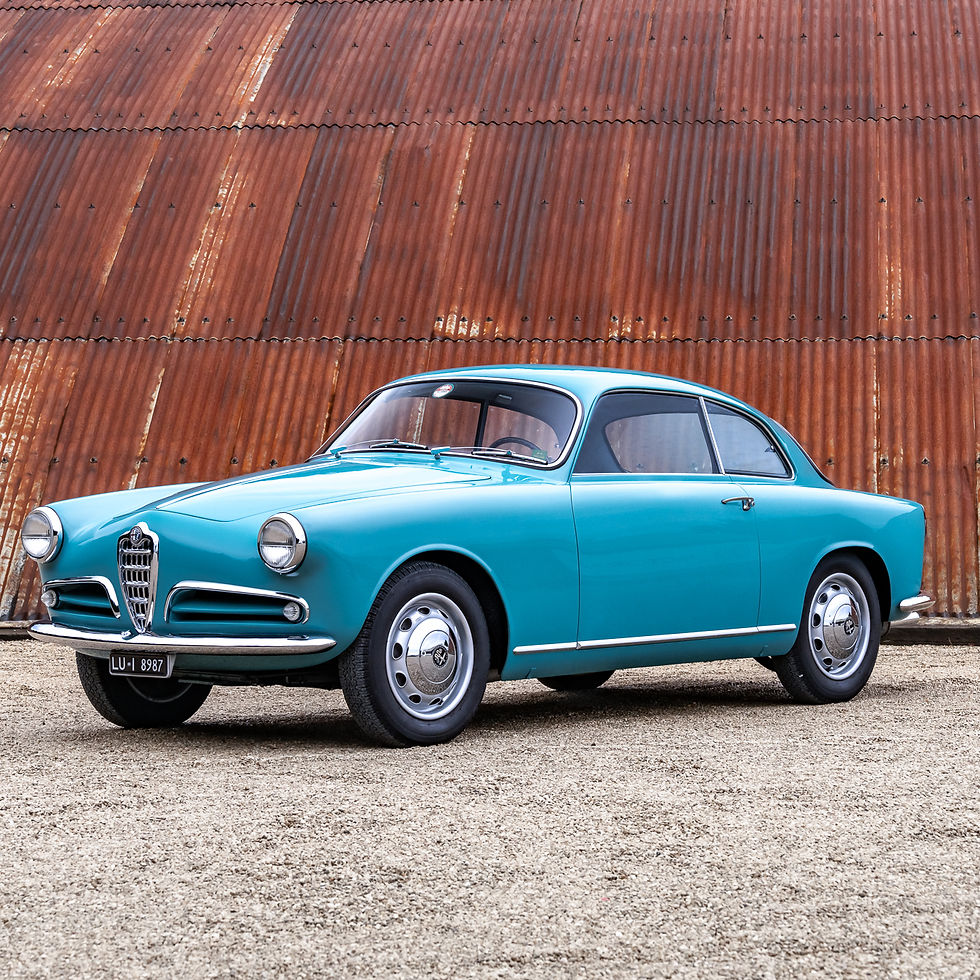The Porsche 356 occupies a special place in automotive history, as it laid the foundations for the legendary Porsche brand. The brainchild of the visionary Ferdinand 'Ferry' Porsche, the 356 (the brand's 356th design) became the first production car to bear the Porsche name and paved the way for the iconic sports cars that would follow. Launched in 1948, the 356 quickly became recognized for its distinctive design, superb engineering and outstanding performance, cementing its status as a classic icon that continues to captivate enthusiasts around the world.
It was thanks to the 356 that the manufacturer succeeded in making a name for itself and producing the hyper-powerful and prestigious models we know today.
The origins of the Porsche 356 date back to the aftermath of the Second World War, when company founder Ferdinand Porsche and his son Ferry set out to create a sports car that combined performance and practicality. Using parts from the Volkswagen Beetle, the first Porsche prototype, known as "No. 1" or "Porsche 356-001" was created : using its rear engine, aerodynamic design and lightweight construction as the basis of the 356 series.
The Porsche 356 went through several iterations during its production period, from 1948 to 1965. The first models, often referred to as "Pre-A", featured a two-piece windscreen and various design elements borrowed from the Volkswagen Beetle. Over the years, the 356 evolved into the 'A', 'B' and 'C' series, each marked by refinements and improvements.
The distinctive shape of the 356, with its elegant curves, iconic round headlights and sloping roofline, has become synonymous with timeless elegance. The attention to detail in its design, combined with precision engineering, has contributed to the car's enduring appeal.
In the United States, this difference takes on a particular significance and becomes a real opposition, as it is hard to imagine two types of cars more antinomic than an American car and a 356. Despite being at the opposite end of the American way of driving, it was to conquer the market on the other side of the Atlantic.
Dressed in round and smooth lines, the myth was born in the guise of a beetle. But to get away from a style that had become archaic and to straighten out a line that was undeniably sluggish, the stylistic evolution of the 356 gave the car a few angles. As skillful as they were discreet, these alterations nevertheless preserved the car's original and endearing personality.
Beneath its elegant bodywork, the Porsche 356 benefits from innovative engineering that sets it apart from its contemporaries. The configuration of rear engine and rear-wheel drive, a design philosophy also inherited from the Beetle, offered exceptional handling and agility. Lightweight construction, with aluminium body panels, contributed to the car's impressive power-to-weight ratio at the beginning.
The 356 also had various engine options over the years, with air-cooled flat-four engines becoming a hallmark of Porsche sports cars. Collaboration with renowned engine builder Ernst Fuhrmann led to improvements in performance and reliability, cementing the 356's reputation both on the road and on the racetrack.
The 356 borrowed a lot from the Beetle! In addition to its platform and torsion bar suspension, it has the same air-cooled four-cylinder engine, with a displacement reduced to 1086 cm3. Thus, rigged with forty modest horsepower (140 km/h), the 356/1100 continued its career until 1954. In April 1951, the 1300 version was launched, and in the autumn of the same year, the first 1500 cm3 with 60 bhp appeared.
October 1952 saw the launch of the 1500 Super, with a now respectable 70 bhp. A major event was the introduction of Porsche's famous four-speed gearbox. Finally, the same year saw the appearance of the legendary American roadster, built at the request of Max Hoffmann, Porsche's importer in the United States. It was a forerunner of the Speedster, which appeared in September 1954. In the autumn of 1955, the 356 gave way to the 356 A. More comfortable, this second generation (excluding the Carrera) was built around two engines, the old 1300 and a new 1600 cm3.
The 356 in racing:
The Porsche 356 quickly earned its stripes on the racetrack, establishing Porsche as a force to be reckoned with in motor sport. Successes in events such as the 24 Hours of Le Mans, the Mille Miglia and the Carrera Panamericana highlighted the 356's reliability, speed and overall performance. All these race victories played a crucial role in shaping the brand's identity and contributed to the car's popularity with sports driving enthusiasts.
The reputation of the Porsche 356 has been earned above all in motor racing. Light, maneuverable, and equipped with a lively engine, it won the first edition of the "European Rally Championship” in 1953. It won the competition again in 1961 and the same year won the Rally Germany. The Porsche 356 won all 4 editions of the 'Liège-Rome-Liège' race (1952, 1954, 1957, 1959). It also won the 1956 Press on Regardless Rally and the 1960-1963 European Hill climb Championship.
Although production of the Porsche 356 ceased in 1965, its legacy lives on. The car's timeless design, combined with its historical importance and racing pedigree, made it a sought-after collector's item, but it also paved the way for the iconic models that followed, notably the 911.
Thus, thanks to a policy of small steps, which ensured a slow but steady rise in power, the 356, born with 40 bhp in 1950, culminated twelve years later with 130 bhp and almost double the engine capacity. The last 356 C left the production line in April 1965, a year after the launch of the 911. But the 356 would survive on its own through this new model, which was an extrapolation of it.
With its reputation, Porsche ended up seducing a number of famous personalities. Owners of the 356 included former French President Georges Pompidou and King Beaudoin. Hollywood stars such as James Dean also succumbed to the charms of this emblematic model from the German manufacturer.
Our Porsche 356 is a Pre-A from 1954:
The current owner bought the car in 2015 from Automobilia in Reims with the aim of taking part in historic races such as the Tour Auto and the Tour de Corse. The car is in FIA GTS Race specification with a 136bhp engine and bespoke gearbox. The car will evolve with the races, notably at DG Racing in Yenne, where the engine was recently rebuilt. Our 356 has taken part in several Tour Auto events, including an index of performance victory in 2022. It is now sold ready to race with a revised gearbox. Eligible for the major historic events: Tour Auto, Le Mans Classic... this car is the absolute weapon to win the index.


































































